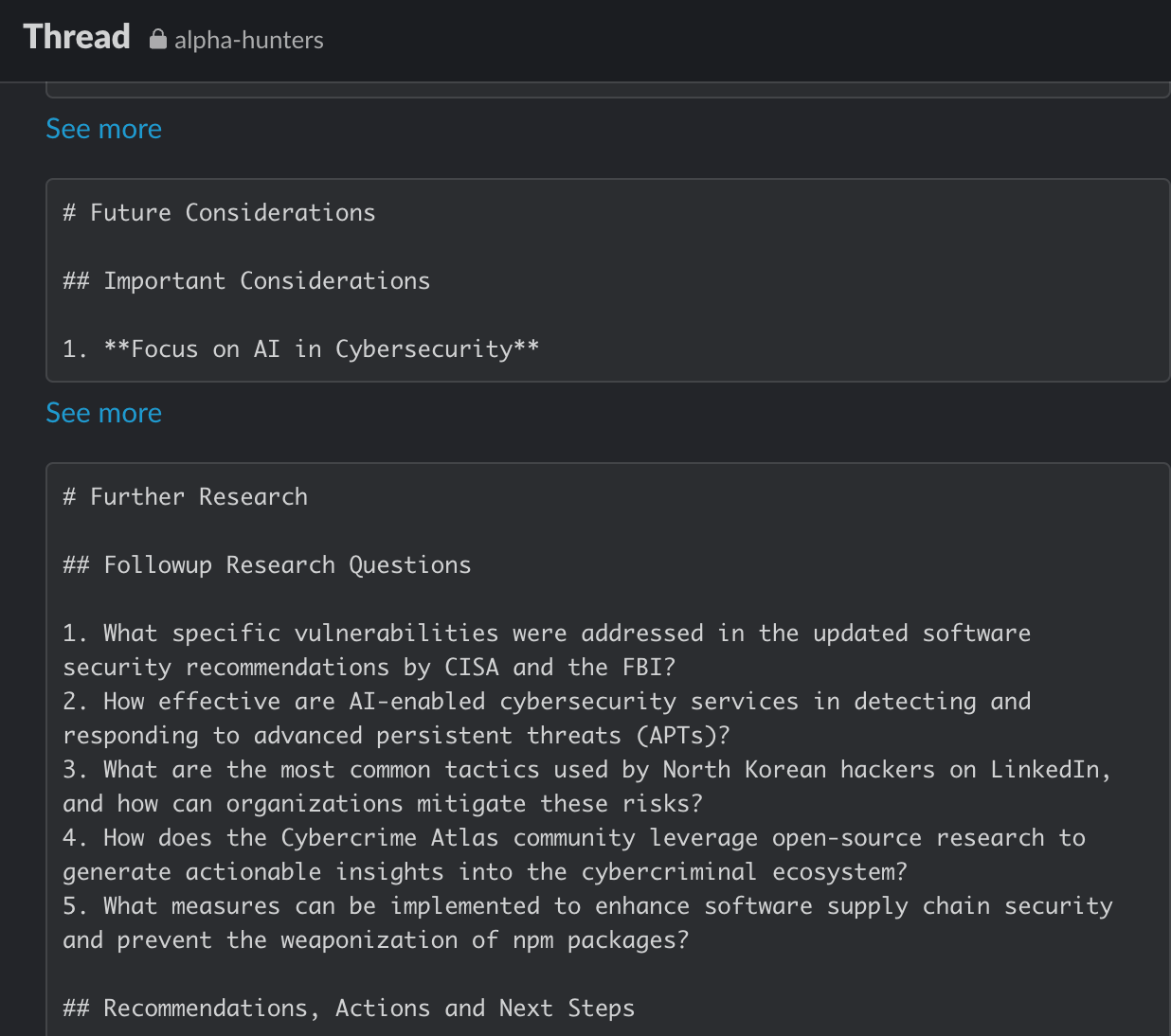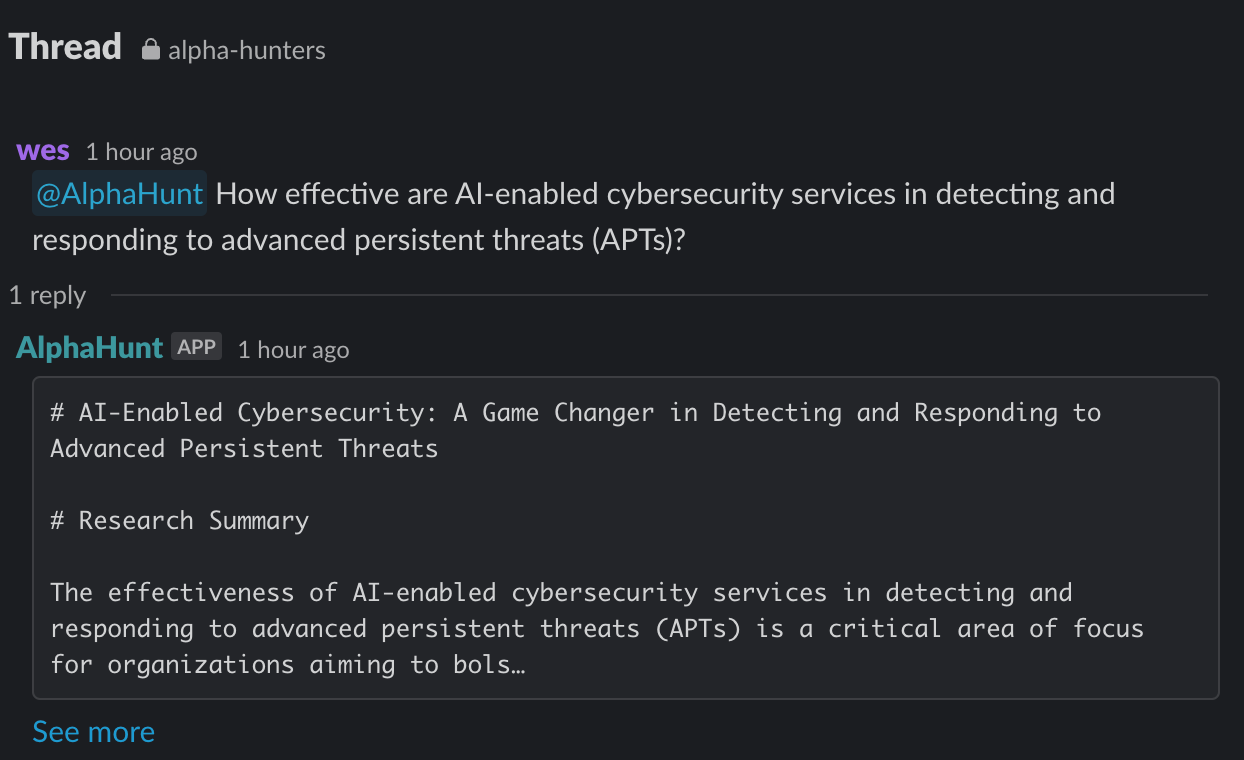AI-Enabled Cybersecurity: A Game Changer in Detecting and Responding to Advanced Persistent Threats
The effectiveness of AI-enabled cybersecurity services in detecting and responding to advanced persistent threats (APTs) is a critical area of focus for organizations aiming to bolster their defenses against sophisticated cyber-attacks.



I use this just about every day- easy way to get the contents of a research theme into my intelligence graph for future research.
TL;DR
- Enhanced Detection Accuracy: AI improves detection accuracy by analyzing vast amounts of data.
- Faster Response Times: Automated AI systems can respond to threats in real-time.
- Reduced False Positives: AI models can minimize false positives.
- Scalability: AI systems can scale to handle large volumes of data.
- Integration with Existing Security Infrastructure: AI can be integrated with existing security tools and systems.
Research Summary
The effectiveness of AI-enabled cybersecurity services in detecting and responding to advanced persistent threats (APTs) is a critical area of focus for organizations aiming to bolster their defenses against sophisticated cyber-attacks. APTs are characterized by their prolonged and targeted nature, often causing significant damage to organizations. AI-enabled cybersecurity services leverage advanced techniques such as machine learning (ML) and deep learning (DL) to enhance threat detection and response capabilities, making them indispensable in the modern cybersecurity landscape.
Enhanced Detection Accuracy
AI significantly improves detection accuracy by analyzing vast amounts of data and identifying subtle patterns that may indicate an APT. This capability is crucial for early detection and prevention of sophisticated threats. AI's ability to process and analyze data at scale allows it to detect anomalies that might be missed by traditional methods, providing a more robust defense against APTs.
Faster Response Times
Automated AI systems can respond to threats in real-time, significantly reducing the time between detection and mitigation. This rapid response is essential in minimizing the impact of APTs. AI-driven Security Orchestration, Automation, and Response (SOAR) systems streamline incident response processes, enabling quicker containment and remediation of threats.
Reduced False Positives
AI models can minimize false positives by accurately distinguishing between legitimate activities and potential threats. This reduction in false positives allows security teams to focus on genuine risks, improving overall efficiency and effectiveness. Continuous learning and adaptation of AI models ensure they remain effective against evolving threats.
Scalability and Integration
AI systems can scale to handle large volumes of data and network traffic, making them suitable for organizations of all sizes. Additionally, AI can be integrated with existing security tools and systems, enhancing their capabilities and providing a comprehensive view of potential threats. This integration facilitates improved decision-making and a more cohesive security posture.
Breaches and Case Studies
-
(2024-09-20) Akitra's AI for Advanced Persistent Threat (APT) Detection and Mitigation
- Description: Akitra's AI-driven solutions have been instrumental in detecting and mitigating APTs by leveraging machine learning and deep learning techniques.
- Actionable Takeaways: Implement AI-driven anomaly detection and predictive analytics to enhance threat detection capabilities.
- References: Akitra
-
(2024-10-25) Rackspace's AI Enhancing Threat Detection & Response
- Description: Rackspace's AI-driven threat detection and response systems have successfully identified zero-day exploits and mitigated ransomware and DDoS attacks.
- Actionable Takeaways: Utilize AI for real-time threat detection and automated incident response to improve cybersecurity posture.
- References: FAIR
-
(2024-08-04) Comprehensive Review of AI-driven Detection Techniques
- Description: A review of over sixty studies on AI-driven detection techniques, highlighting the effectiveness of ML and DL in identifying and responding to various cyber threats.
- Actionable Takeaways: Continuously update AI models with new threat intelligence to maintain effectiveness against evolving threats.
- References: Journal of Big Data
Recommendations, Actions, Suggested Pivots, Forecasts and Next Steps..
(Subscribers Only)





